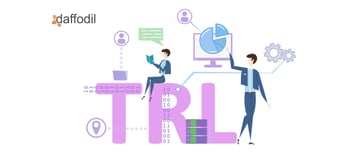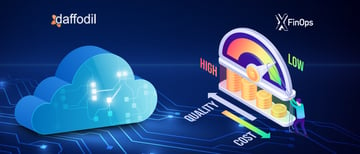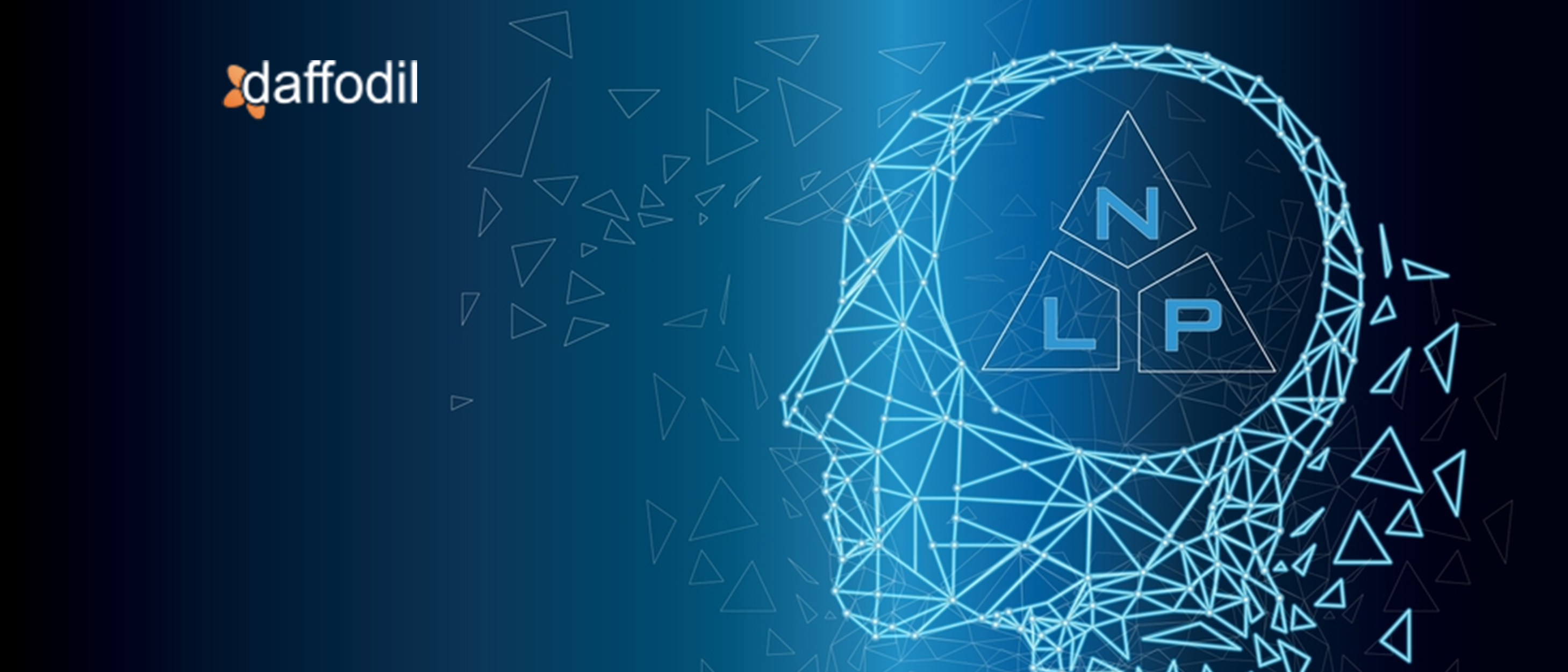
Technology is embedded in every aspect of our lives. We rely on it for almost everything, especially to communicate with others. Simply, take the example of Siri or Alexa that we use in our day-to-day lives. Ever wondered how these virtual assistants understand and interpret our commands? How do they pick up terms and carry out the tasks according to our instructions? For example, when we ask Alexa to set an alarm for us.
Hey Alexa, set an alarm for 5 AM tomorrow.
Done- Your alarm is set for 5 AM tomorrow!
So convenient, right?
We all know that the logic behind this is Artificial intelligence (AI) but the real game changer is Natural Processing Language (NLP) which is the subset of AI. NLP has completely changed the way we talk with machines, as well as how they answer.
In essence, NLP is a branch of artificial intelligence that deals with computer science and linguistics to aid computers in understanding, processing, and generating "human language".
The objective of NLP is to improve the way computers understand human text and speech. Because the way humans speak and write can often be inconclusive and ambiguous whereas computers are completely logic-based and are structured to follow and execute the given instructions. Therefore, NLP acts as a bridge to fill the language gap between the command line interface of a computer and a human.
Now let's understand what NLP is and how is it enabling AI engineers to work in different industries.
What is Natural Language Processing?
In layman's terms, NLP combines the fields of computer science and computational linguistics to decode human language structure to understand, break down, and separate significant details from text and speech, derive meaning, figure out intent and sentiment, and form a response or output. It is a component of Artificial Intelligence(AI) that deals with the interpretation and manipulation of human speech or text using software.
NLP isn’t a new field of study but has been progressing at a fast pace because of the availability of big data, effective high-end algorithms, and the profound interest in human-to-machine interaction and communication.
Through NLP algorithms, these natural forms of interaction and communication are broken down into data that can be deduced by a machine. It takes the human-written text and converts it into a form that a computer can understand. It analyzes numerous components such as vocabulary, syntax, and grammar that construct sentences as well as the phonetics, tones, accents, and diction of spoken languages.
It implements computational linguistics with artificial intelligence, machine learning, data analytics, statistical, and deep learning models to analyze natural human language and understand the actual meaning of text or speech data. Hence, NLP empowers computers to understand and respond intelligently to humans.
Why is Natural Language Processing Important?
Businesses deal with a large amount of unstructured, text-heavy data and require a solution to process it speedily. To efficiently use these data, organizations have started to implement NLP as it helps analyze and make sense of vast volumes of data. It helps process text as well as speech data, apprehends sentiments and intents, and even helps derive critical insights from the data.
Natural language is immensely complex and the data is hugely unstructured. The way humans speak and write can be difficult for computers to understand. It may contain misspellings, and missing punctuations, while speech-based data can be tricky because of regional accents, stuttering, mumbling, etc. But using NLP solutions, these massive amounts of data can be simplified because their software allows for faster processing and the use of business models to extract human language insights.
NLP is often utilized in the background of the many popular applications and products that we use every day, assisting businesses in improving customer experiences. NLP is still evolving and has the potential to revolutionize many industries, from healthcare to sales and marketing. Here are just a few applications of NLP-
- Speech Recognition
- Sentiment Analysis
- Social Media Analytics
- Auto-correct and Auto prediction
- Text Summarisation
- Voice Assistants and Chatbots
- Email Filtering
- Advertisement to Targeted Audience
- Recruitment
- Translation
The task of Natural Language Processing in machines is divided into two subtasks: -
Natural Language Understanding: Techniques that aim at dealing with not only the syntactical structure of a language but also deriving semantic meaning from it come under this subtask— Named Entity Recognition, Text Modeling, etc.
Natural Language Generation: The information that is derived from NLU is taken a step further with language generation. Examples are – Question Answering, Text generation, and Speech Generation (found in virtual assistants).
READ MORE: 10 Interesting Applications of Natural Language Processing (NLP)
So let’s explore a list of the top 7 NLP techniques that are the backbone of the applications of natural language processing.
Key Techniques of NLP
Machines, after all, recognize numbers in the form of 1s and 0s, not the letters of our language. And that can be a tricky landscape to operate in machine learning. So how can we manipulate and process text data to build the NLP model? The solution lies in the techniques of Natural Language Processing (NLP).
1. Tokenization
Tokenization is the first step in the NLP process. In this technique, a long-running text string is taken and split into smaller units in order to be understood by a machine. Each of these smaller units is called a token which constitutes words, symbols, numbers, etc.
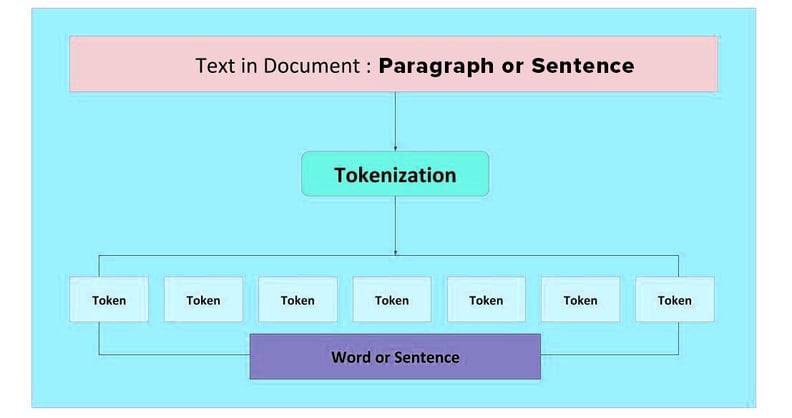 Here’s an instance of a string of text data:
Here’s an instance of a string of text data:
“Are machines superior to humans?“
With tokenization, we’d get something like this:
'Are' 'machines' 'superior' 'to' 'humans'
These tokens are the building blocks that help understand the context by analyzing the words present in the text.
There are multiple tokenization techniques used in NLP –
- Spacy Tokenizer
- Rule-Based Tokenization
- Subword Tokenization
- White Space Tokenization
- Dictionary Based Tokenization
- Penn Tree Tokenization
2. Lemmatization and Stemming
The most crucial NLP technique in preprocessing pipeline is stemming or lemmatization. It involves breaking down words to their roots and root meanings respectively, restructuring them to measure intent. The purpose of both stemming and lemmatization is to reduce inflectional forms.
Both Lemmatization and Stemming techniques are similar, but they generate different outcomes so it is important to determine the proper one for a better analysis.
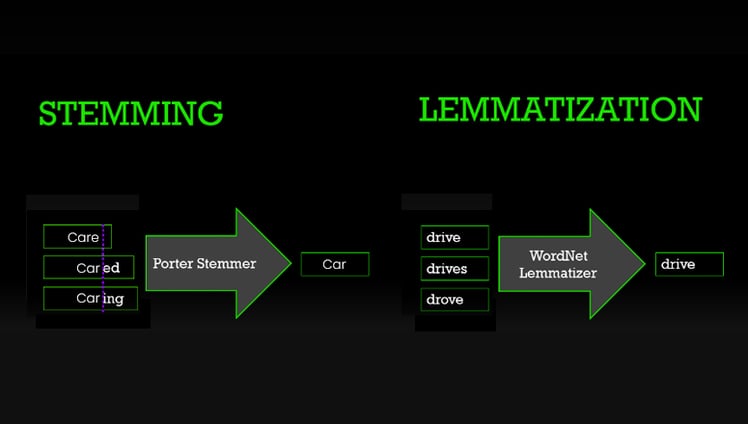
Stemming- It groups words by their root stem. The algorithm works by chopping off the end or the beginning of the word without any knowledge of the context. It often leads to incorrect meanings and spelling.
For example, Caring- If you stem this word, it would return 'Car'.
Lemmatization- On the other hand, lemmatization groups words based on root definition. It focuses on the context in which the word is being used and converts the word to its meaningful base form, which is called Lemma.
For example: If you lemmatize the word 'Stripes', it would return 'Stripe'.
But words such as walking, running, swimming, etc., would give you the same result whether you lemmatize or stem those words i.e., walk, run, swim, etc.
3. Keyword Extraction

When you are reading a text segment be it on your computer, phone, or a book, you perform this involuntary activity of scanning through it- you mostly leave out filler words and find important words from the text.
Keyword extraction does exactly the same thing as detecting important keywords in a text document. Keyword extraction (also known as keyword detection or keyword analysis) is a text analysis for acquiring meaningful insights into a given topic.
It uses artificial intelligence with natural language processing to simplify human language so that it can be understood and analyzed by machines. It is used to detect keywords from all manner of text: regular text documents, online forums and reviews, social media comments, news reports, and many more.
The keyword extraction technique is utilized to compress the text and extract relevant keywords. It can add great value in NLP applications where an enterprise wants to identify customer pain points and improve their experience based on the reviews or if they want to identify trending topics from a recent news item to write a blog.
4. Named Entity Recognition

When we read a piece of text, we naturally identify named entities like persons, locations, number values, and so on. For example, in the sentence “Elon Musk bought the social media company named Twitter for about $44 billion” we can easily recognize three types of entities:
“Person”: Elon Musk
“Organisation”: Twitter
"Monetary Value": $44 billion
However, it's not as simple as that for computers to recognize entities but it can be achieved using ML and NLP.
Named Entity Recognition (NER) is a Natural Language Processing technique that classifies ‘named entities’ into predefined categories like people, enterprise, location, date, etc., within unstructured text documents. It is quite similar to Keyword Extraction except for the fact that the extracted keywords are placed into predefined categories.
5. Topic Modeling
Topic modeling is a statistical NLP technique that uses an unsupervised machine learning algorithm meaning it does not require a predefined list of tags or training data that’s been previously classified by humans.
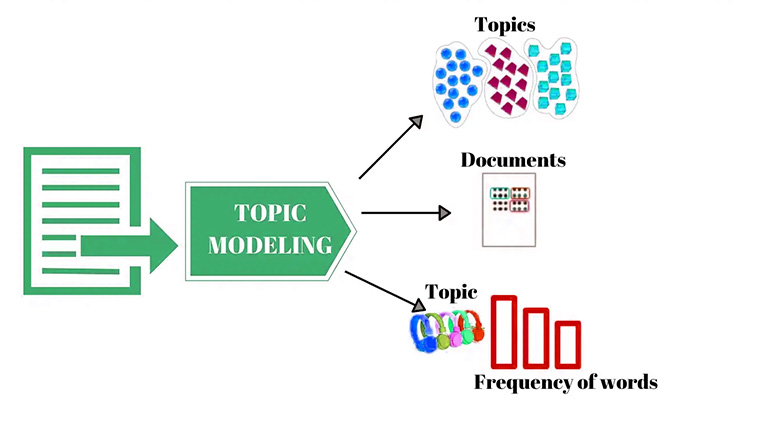
It scans text documents, detects word and phrase patterns within them, and automatically analyzes text data to determine cluster words. It enables machines to organize and summarize data at a scale that would be impossible for humans.
It quickly analyzes your data without any training. Let's say you're an IT organization’s marketing executive and you want to know what your customers' reviews are and their opinion about particular features of your product. Instead of spending hours looking through bundles of feedback, to know which reviews are talking about your topics of interest, you can easily analyze them with a topic modeling algorithm. Latent Dirichlet Allocation is one of the most powerful NLP solutions used for topic modeling.
6. Text Summarization
We often see that students need to go through large pdf files for projects or organizations need to deal with bundles of reports for analysis. Getting through those huge chunks of text can be extremely perplexing for the user so, in order to simplify those unstructured heavy-text data, Text Summarization got introduced.
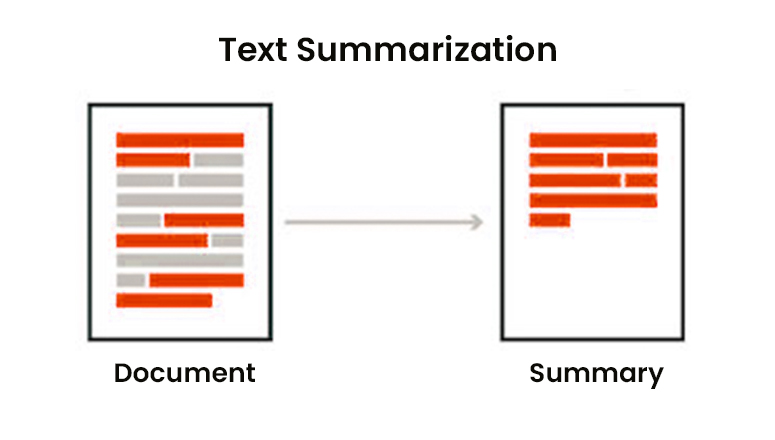
This NLP technique is used to extract valuable information from text documents without having to read word to word. It breaks down those lengthy amounts of texts into its most basic terms using NLP with machine learning in order to make it more understandable.
This process can be extremely time-consuming if it is manually done, automatic text summarization reduces the time radically. It quickly synthesizes complicated language into a cohesive and fluent summary that contains the abstract idea of that text document. There are different text summarization tools are available on the internet that uses AI technology to summarize lengthy text documents. A summarize tool automatically takes the valuable key points from the lengthy reports and generates its precise summary within seconds. This will saves time on manual text summarization and help organizations in analyzing multiple reports easily and quickly.
There are two types of text summarization techniques-
Extraction-Based Summarization: In this text summarization technique, some words and important key points in the document are extracted to make a summary without making any changes to the original text.
Abstraction-Based Summarization: In this technique, new sentences are structured from the original document that shows the most crucial information. This technique comprises paraphrasing which means the sentence structure of the summary is not the same as the original text document. This helps in overcoming the grammatical inconsistencies found in extraction-based methods.
The most popular tool for text summarization is 'Spacy'.

Humans express their opinions and feelings more honestly than ever before, sentiment analysis is evolving and becoming a crucial tool to monitor, analyze and understand the sentiment in all types of data.
Sentiment Analysis (or emotion AI or opinion mining) is one of the most dominant NLP techniques for detecting sentiment in text. The purpose is to classify text like product reviews, tweets, or any text on the web into one of these three categories- Positive/ Negative/Neutral.
It is often used by businesses to detect and analyze customer feedback, allowing them to learn what makes their customer happy or annoyed so that they can improve customer experience by tailoring products and services to meet their customers' requirements.
NLP: Eliminating the Language Barrier Between Machines and Humans
Natural language processing is an intriguing field and one that has already brought comfort to our day-to-day lives. It still requires a lot of research and innovation to cater to all kinds of use cases. As technology advances with deep learning and semantic learning, we can expect to see further applications of NLP across many different industries.
If you want to implement NLP solutions in your business then Daffodil can be the right technology partner that will help your organization to enhance its efficiency with its expertise in Artificial Intelligence.


